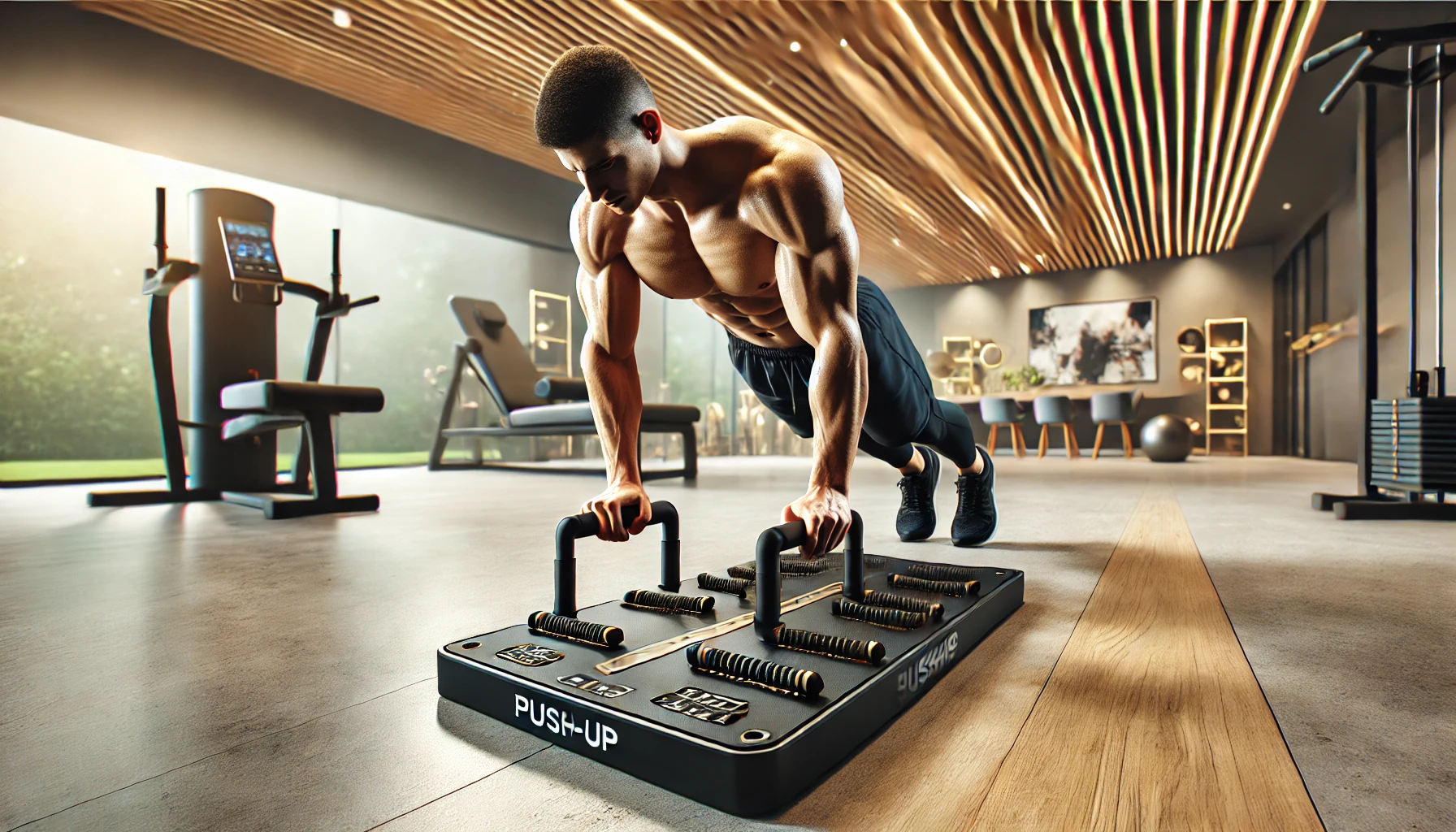Building Explosive Throwing Power: Shoulder and Arm Exercises to Elevate Your Game
Explosive throwing power is a game-changer in many sports, and the key to achieving that power lies within the strength and mobility of your shoulders and arms. Whether you’re a baseball pitcher, a football quarterback, or an athlete looking to improve your overall throwing ability, developing shoulder and arm strength is crucial for unlocking your full throwing potential. This article will guide you through the best exercises designed to enhance your shoulder and arm strength, targeting the key muscles involved in throwing movements. With consistent training and focus on these exercises, you’ll be well on your way to throwing with more power and precision.
Understanding the Role of Shoulders and Arms in Throwing Power
Before diving into the exercises, it’s essential to understand how the shoulder and arm muscles contribute to explosive throwing power. Throwing is not just about arm strength; it’s a full-body movement that begins in the legs and moves through the core before reaching the arm. However, the shoulder and arm muscles play a critical role in the final phase of the throw—the release.
The shoulder provides the necessary rotation for speed and control, while the arms are responsible for the force that delivers the ball or object toward the target. In particular, the rotator cuff, deltoids, biceps, and triceps are key muscle groups that contribute to generating speed and power during a throw. By strengthening and conditioning these muscles, you can optimize your throwing performance and increase both velocity and accuracy.
Rotator Cuff Strength: The Foundation for Throwing Power
One of the most important muscles to focus on when training for throwing strength is the rotator cuff. This group of four muscles (supraspinatus, infraspinatus, teres minor, and subscapularis) is essential for shoulder stability and rotational power, which are fundamental during the throwing motion. Weakness in the rotator cuff can lead to poor throwing mechanics, instability, and a higher risk of injury.
Incorporating exercises that target the rotator cuff is crucial for both injury prevention and improved throwing performance. These exercises are relatively low-impact but highly effective for building stability and strength in the shoulder joint.
A few key exercises for strengthening the rotator cuff include:
External Rotations: Using a resistance band or light dumbbell, keep your elbow bent at a 90-degree angle and rotate your forearm outward away from your body. This targets the infraspinatus and teres minor muscles, which are essential for shoulder rotation during the throwing motion.
Internal Rotations: In contrast to external rotations, this exercise targets the subscapularis muscle. Use a resistance band or cable machine, hold your elbow at a 90-degree angle, and rotate your forearm inward across your body.
Scaption Raises: Scaption raises involve holding light dumbbells at your sides and lifting your arms out in front of you at a 30-degree angle. This works the supraspinatus muscle, which is key for shoulder stability and mobility during a throw.
Strengthening the rotator cuff is a long-term investment in injury prevention and throwing performance. Incorporate these exercises into your routine two to three times a week for maximum benefits.
Deltoids: Power and Control in the Throw
The deltoid muscles, located on the shoulders, are responsible for the arm’s ability to move in various directions. These muscles provide the necessary strength for overhead movements, such as throwing. A well-developed deltoid is crucial for both power and control, especially during the acceleration phase of the throw.
Deltoid exercises should target all three heads of the muscle: the anterior (front), lateral (middle), and posterior (rear) deltoids. Training the deltoids from multiple angles ensures that you build a balanced, powerful shoulder that can handle the intense stress of throwing.
Some of the best deltoid exercises for throwing power include:
Overhead Press: This compound movement targets the entire shoulder, especially the anterior and lateral deltoids. Using dumbbells or a barbell, press the weight overhead in a controlled motion. The overhead press mimics the pushing motion of a throw and helps build the shoulder strength necessary for generating speed.
Lateral Raises: Lateral raises specifically target the lateral deltoids, which are important for shoulder stability and controlled arm movement. With a dumbbell in each hand, lift your arms out to the side until they are parallel with the ground. Keep your elbows slightly bent to reduce strain on the shoulder joint.
Rear Delt Flyes: The posterior deltoids are responsible for controlling the arm during the follow-through phase of a throw. Rear delt flyes, performed with dumbbells or resistance bands, target the posterior deltoids and help improve shoulder stability and control.
A strong deltoid helps increase your arm’s range of motion and control during the throwing motion. Incorporate overhead presses, lateral raises, and rear delt flyes into your workout routine to develop well-rounded shoulder strength.
Biceps and Triceps: The Final Push for Explosive Throws
While the shoulder provides the initial rotation and stability for a throw, the arms—specifically the biceps and triceps—are responsible for the final push and acceleration. Developing strength in these muscles is crucial for improving your throwing velocity.
The biceps assist in the deceleration phase of a throw, helping to control the arm’s motion and prevent hyperextension. The triceps, on the other hand, provide the explosive force needed to propel the ball forward during the release.
Here are some essential exercises for building biceps and triceps strength:
Bicep Curls: Bicep curls target the brachii muscle, which is responsible for flexing the elbow. Whether using a barbell, dumbbells, or a resistance band, bicep curls are a simple yet effective way to strengthen the muscles that help control the arm during a throw.
Tricep Dips: Tricep dips are an excellent compound movement for targeting the triceps and building explosive pushing power. Using parallel bars or a bench, lower your body until your elbows are at a 90-degree angle, then push back up to the starting position.
Close-Grip Bench Press: The close-grip bench press emphasizes the triceps by narrowing the hand placement on the barbell. This movement strengthens the triceps, shoulders, and chest, making it ideal for building the pushing power needed for an explosive throw.
Developing strength in both the biceps and triceps is key for improving arm strength and control during a throw. Regularly incorporate these exercises into your routine for optimal arm strength.
Improving Arm Speed with Explosive Movements
Throwing power is not just about strength—it’s also about speed. Explosive movements help develop the fast-twitch muscle fibers responsible for quick and forceful throws. By incorporating exercises that focus on arm speed and quickness, you’ll enhance the velocity of your throws.
Some of the most effective explosive exercises for the arms include:
Medicine Ball Slams: This exercise involves slamming a heavy medicine ball onto the ground with maximum force. Medicine ball slams are excellent for developing explosive power in the arms, shoulders, and core, mimicking the motion of a powerful throw.
Plyometric Push-Ups: Plyometric push-ups involve pushing your body off the ground explosively, so your hands leave the floor. This exercise helps build fast-twitch muscle fibers in the arms and shoulders, improving arm speed for throwing.
Battle Ropes: Battle ropes are an excellent tool for improving arm speed and endurance. By rapidly moving the ropes in waves, you engage your shoulders, arms, and core, building explosive power that translates to faster, more powerful throws.
Arm and Shoulder Mobility: Maximizing Range of Motion
While strength is crucial for explosive throwing, flexibility and mobility are just as important. A full range of motion in the shoulders and arms allows you to execute a more efficient and powerful throw. Poor mobility can limit your throwing range and lead to improper mechanics.
Incorporate dynamic stretches and mobility drills into your warm-up and cool-down routines to improve flexibility and mobility in the shoulders and arms. Some effective mobility exercises include:
Arm Circles: Perform large arm circles in both directions to warm up the shoulders and increase mobility. This simple exercise helps prepare the shoulder joint for throwing motions.
Sleeper Stretch: The sleeper stretch targets the rotator cuff and helps improve internal rotation in the shoulder. Lie on your side with your arm extended out, and use your other hand to gently push your arm toward the floor to stretch the shoulder muscles.
Thoracic Spine Rotations: Rotating the thoracic spine helps improve upper back mobility, which is crucial for efficient arm movement during a throw. Perform this stretch by sitting with your legs crossed and rotating your upper body from side to side.
Putting It All Together: Creating a Shoulder and Arm Strength Routine
To build explosive throwing power, it’s important to develop a well-rounded workout routine that targets the shoulders and arms. Incorporate strength exercises, explosive movements, and mobility drills to create a balanced program.
A sample weekly routine might look like this:
Day 1: Shoulder strength (overhead press, lateral raises, rear delt flyes)
Day 2: Arm strength (bicep curls, tricep dips, close-grip bench press)
Day 3: Explosive movements (medicine ball slams, plyometric push-ups, battle ropes)
Day 4: Active recovery (stretching, mobility drills)
Day 5: Shoulder stability (rotator cuff exercises, scaption raises)
Day 6: Full-body conditioning (sprints, agility drills)
Day 7: Rest
Your Path to Explosive Throwing Power
Building explosive throwing power in your shoulders and arms is a gradual process, but with consistent training and focus, the results will be evident. By incorporating the right exercises into your routine, you’ll develop strength, speed, and control that translates into more powerful and accurate throws.
Stay patient, stay dedicated, and watch your throwing abilities reach new heights as you continue to build shoulder and arm strength. With the right training, you’ll be able to unleash your full throwing potential and dominate in your sport.
Focus on Explosive Power: Incorporate explosive exercises like medicine ball slams and plyometric push-ups to build arm speed.
Strengthen the Shoulders: Use overhead presses and lateral raises to target the deltoids and improve shoulder strength.
Develop Arm Power: Incorporate bicep curls and tricep dips for optimal arm strength and control during throws.
By focusing on these key areas, you’ll improve your throwing power, accuracy, and overall performance.




